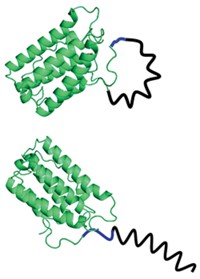Advertisement
Grab your lab coat. Let's get started
Welcome!
Welcome!
Create an account below to get 6 C&EN articles per month, receive newsletters and more - all free.
It seems this is your first time logging in online. Please enter the following information to continue.
As an ACS member you automatically get access to this site. All we need is few more details to create your reading experience.
Not you? Sign in with a different account.
Not you? Sign in with a different account.
ERROR 1
ERROR 1
ERROR 2
ERROR 2
ERROR 2
ERROR 2
ERROR 2
Password and Confirm password must match.
If you have an ACS member number, please enter it here so we can link this account to your membership. (optional)
ERROR 2
ACS values your privacy. By submitting your information, you are gaining access to C&EN and subscribing to our weekly newsletter. We use the information you provide to make your reading experience better, and we will never sell your data to third party members.
Business
Cellular Crowding Improves Efficiency In Protein Factories
Inert polymer mimicking cellular conditions reduces premature side products in enterobactin synthesis
by Carmen Drahl
February 7, 2008
Modular enzymes called nonribosomal peptide synthetases manufacture many antibiotics and immune suppressants in the biomolecule-packed environment of cells. But the same syntheses under less crowded conditions outside the cell are inefficient, limiting potential biotechnology applications.
Zhihong Guo and colleagues at Hong Kong University of Science & Technology have attempted to work around this problem by mimicking the cell's crowded conditions in solution (Org. Lett., DOI: 10.1021/ol7030153). The researchers show that simulated crowding using an inert sucrose polymer prevents an enzyme from releasing premature intermediates during the synthesis of enterobactin, a cyclic peptide that microbes use to acquire iron.
Adding the polymer decreased dead end side products to negligible levels, although it didn't lead to an appreciable increase in enterobactin yield. It isn't clear how crowding suppresses the side products, but Guo's team plans to examine possible crowding-induced structural changes in the enzyme. Prior research by another group has already shown that nonionic detergents improve the efficiency of a related enzyme, most likely by interacting with peptide substrates.





Join the conversation
Contact the reporter
Submit a Letter to the Editor for publication
Engage with us on Twitter